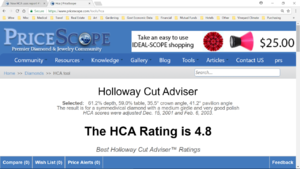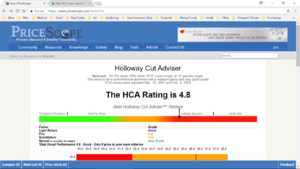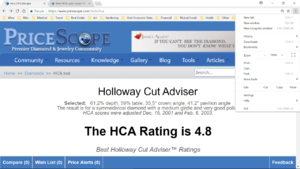Would you like to do a better job?
Steep Shallow stones have very small spreads and so do not work well for earrings and pendants. Any advantage they have in the fire department is more or less lost because the main attribute observers see is brightness and apparent size.
Hi Garry,
I believe Fire is important for many consumers. If consumers do not care about Fire and prefer just Brightness they need buy melee, Princess cuts,... instead RBC






300x240.png)